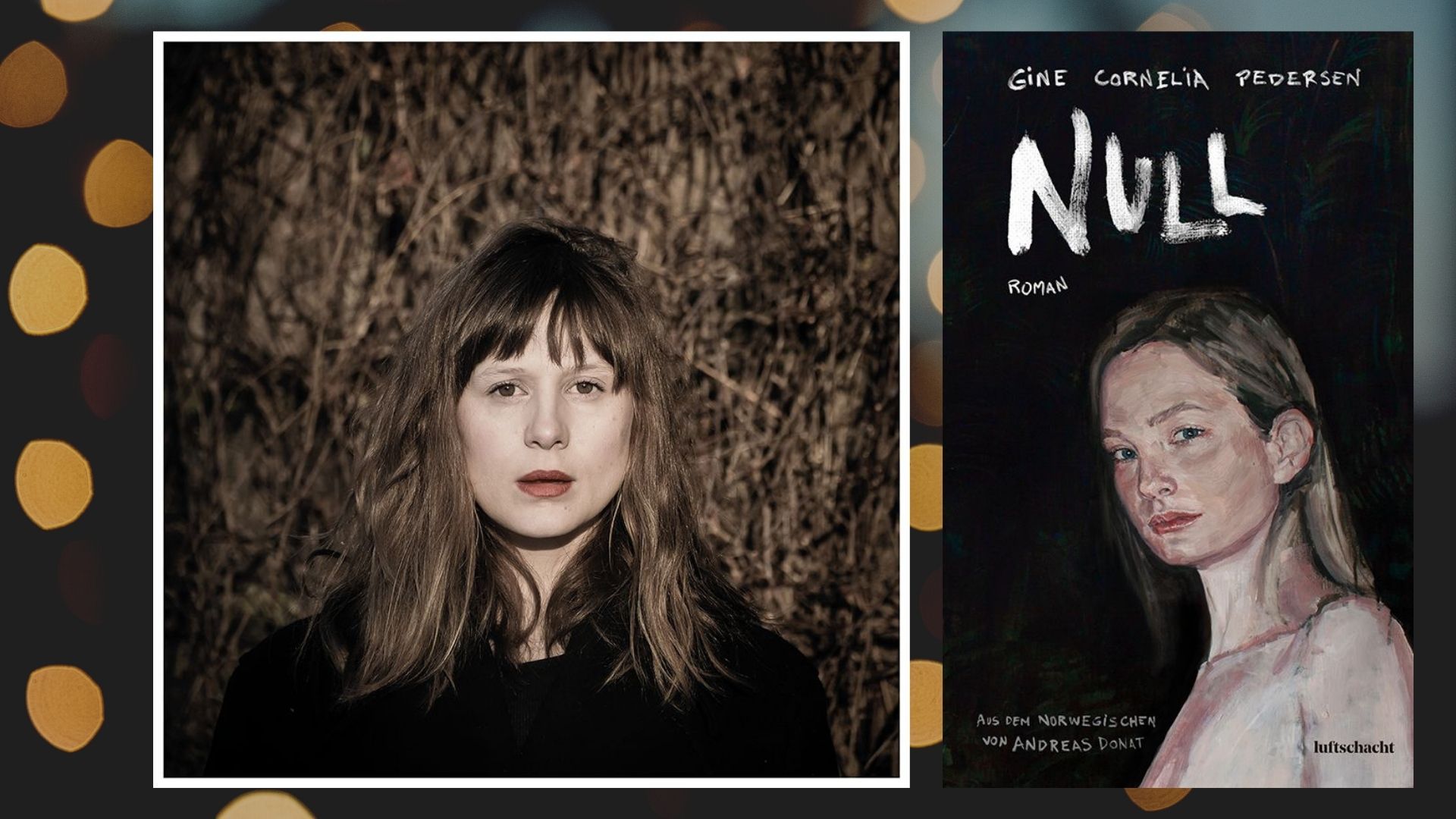–
A staccato of short movements. Nobody has a point, it goes on in a moment – with the next short sentence. Everyone comes with full steam and an absolute claim, and almost always the narrator speaks about herself.
“I am ten years old
I absorb everything
I have no filters “
This permeability is of course a problem for the young girl – and at the same time the skillfully handled narrative process of Gine Cornelia Pedersens in her debut novel “Null”. The Norwegian aims for intimate closeness and direct insight into the experience of an adolescent who moves out with the divorced mother at the age of 16, goes to high school, has friends and pushes them away, loses them and each other too.
“I don’t want any help
I like to be on the ground
I’m drowning in my selfishness
That is wonderful”
The young woman is marginalized, moves to Oslo, is marginalized again and withdraws, becomes aggressive towards others and towards herself – and finally admitted to a psychiatric clinic.
“It’s summer in the pats
I smoke two boxes a day and drink a pot of coffee an hour
The patients sit in the garden, each with his cup and packet of butts
I am sweating and shivering
We’re talking about electric shocks and forced isolation “
Violence against the beloved
Gine Cornelia Pedersen doesn’t even need 30 loosely printed pages to plunge into psychotic madness. Pedersen is an actress and her debut novel, which won a Norwegian Debut Prize in 2013, is like a theatrical monologue. Your young narrator hears voices in her head and cannot defend herself. She wants to say something, but her mouth remains closed. She loves and wants to forcibly push her beloved away.
“I’m frozen
I feel the urge to hit him in the face, to bump his head against the door
Telling him I hate him and that he should fuck off before I kill him
At the same time I want to comfort him, hug him, tell him that he is great and cool and that I love him more than anything else in the world
I want to take care of him
Stroke his hair and say I’ll do anything so we can be together
I am not able to do any of this “
The young woman stops the medication, which dims her feelings and thoughts to zero, and leaves the psychiatric clinic. Sex and drugs alone build bridges to other people who otherwise do not seem to exist. They give her an intoxication in which she escapes the dissolution through the conflict in her for a few moments: The voices are silent.
Journey to death
Just when the rude narrative style of a battered, self-contained person threatens to get bored, because only the continual intensification of the drastic certifies it, because there is no second level, no relativization, no reflection in this ego prison, the book takes off: The young woman travels to Peru to meet death – and hopefully the angelic, protective being that her friend met on a similar journey. Sex and drugs also ensure contact with other people in Peru, but everything gets out of hand and Pedersen pulls the reins narrative. The sentences become even tighter, the omissions larger. The intoxication is initially a refuge and bridge, as hoped, then it becomes self-destructive.
“Meet Swedish boys
Swedish boys are laughing
I funny
Cocaine many times
Sex im Hotel
All together
holidays
Smear cocaine in pussy
Party
One after the other
Look in the mirror
Don’t know who
Smash mirror
There is
Nothing stops
Blood by hand
Lick blood
Smear blood on guys
Funny
Laugh
cocaine
Again in pussy
A little hurt
Dry
Hart
Puke tied up
Cocaine in the mouth and nose
Cocaine on tail
Cock in pussy and mouth
Cock in ass
not good
Blossoms
Shivering
Lots of cocaine
cocaine
Schwarz”
It gets even more violent – and of course it remains unclear whether the experiences, including the subsequent encounter with death, are reality or hallucinations. But the young woman is astonished to find that the madness in her becomes “logical”: She can distinguish the voices as “the inside and the angry”. The monologue from the limited narrative perspective, the possibilities of which Gine Cornelia Pedersen cleverly exploits through gaps and a very contemporary drastic, comes to an end.
The voices outside the head
“Null” is not an educational novel, but maybe something like a self-educational novel not only, but especially for adolescent readers. Pedersen tells of the oldest subject in the novel: the emergence of an ego. With her it arises primarily from within itself. But if there is an I, there is also a you and a you. The I then no longer only speaks to itself, it also speaks to others. In the end, the young woman enters the stage as an actress and is ready to speak many voices.
Gine Cornelia Pedersen: “Null”
Translated from the Norwegian by Andreas Donat
Luftschacht Verlag, Vienna 2021
186 pages, 20 euros.
–
–
–
–


